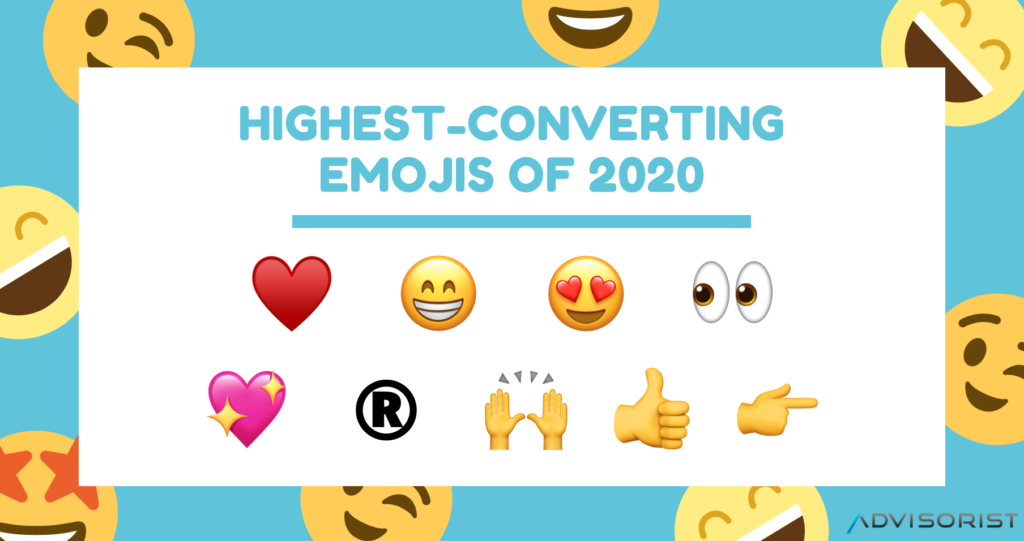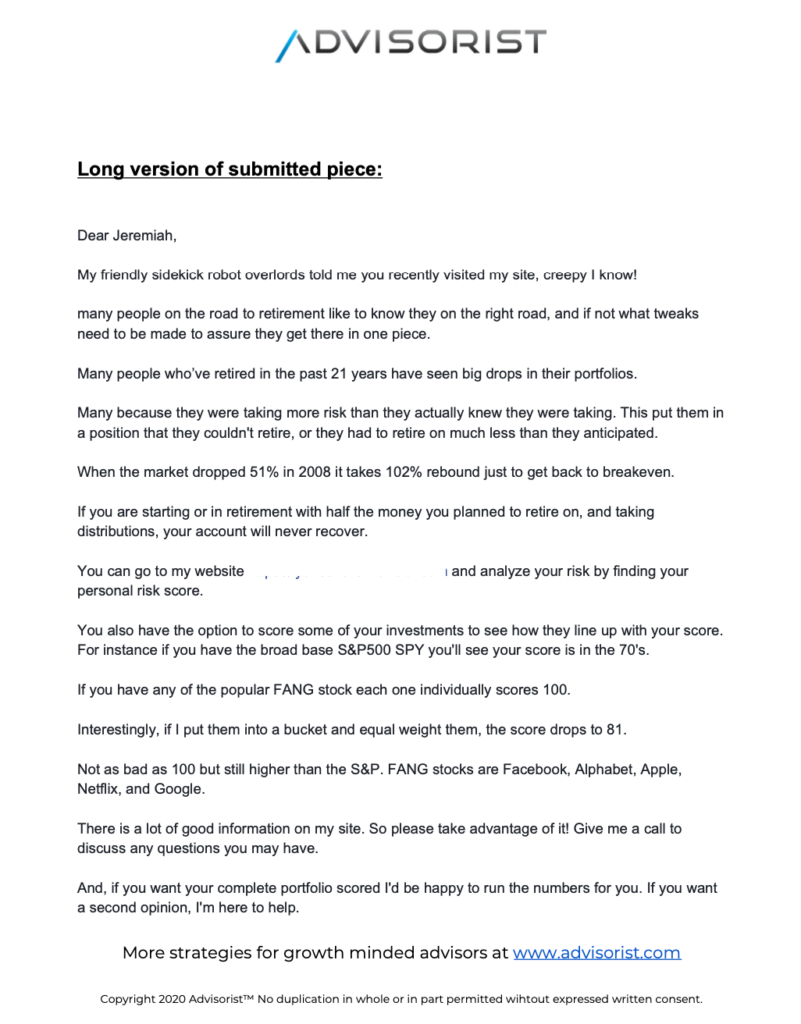If you’ve been reading our blog posts over the past few weeks, you know we’ve been delivering the GOODS. 🤜💥🤛
I’ve systematically walked you through some of my absolute favorite tactics for reaching, engaging, and converting insurance and financial leads via email.
I gave you the $14k Radio Silent Email Campaign for ‘Ghosted Leads.’
Then came the 9-Word, 1-Line Email that Helped an Advisor Generate $249k in Commissions.
I followed that up with 5 Simple Copy-and-Paste Cold Emails Virtual Advisors Are Using to Start Power Conversations.
Then I hit on the Stealthy “Quick Favor” Email Formula that Boosts Response Rates by 4X-10X.
I’ve done my best to layer value on value on value…
(Value that I typically reserve for paid products and high-end consulting clients.)
But I’m not done yet…
In this week’s blog post, I want to clean up the crumbs, fill in the gaps, and provide even more value…
My goal is to pull out 11 of my best nuggets and takeaways from my decades of copywriting experience.
Consider these advanced email strategies and tactics.
Then I’m going to show you how I applied some of them to transform one advisor’s email from good to GREAT.
Best of all, I was able to do it in less than 14 minutes.
11 Advanced Email Strategies and Tactics

1. Take Subject Lines Seriously
Most of the advisors I work with see an email subject line as an afterthought.
They write up an email and then slap on a boring subject line seconds before sending it out to their database of prospects.
BIG mistake.
Over my years of copywriting and email marketing experience, I’ve discovered that roughly 90% of an insurance or financial advisor’s success with an outbound campaign is found in the subject line.
I like to call the subject line the “ad” for the email.
Inboxes are crowded and it’s the subject line that persuades people to click on your email.
If your subject line looks dis interesting, bland, or vague, you’re not going to win the click.
And if you don’t get people to click, all of your hard work crafting compelling copy and presenting a tantalizing offer is a waste.
So I implore you to take email subject lines more seriously.
And while I don’t necessarily believe in a hard and fast rule, I think advertising legend David Oglivy’s 50-50 Rule is worth mentioning.
It was always his belief that you should spend half of the time it takes you to develop a piece of content on the headline.
So if it takes you 30 minutes to write up an email, you should spend 15 minutes brainstorming and refining your subject line.
2. The Power of Emojis 💪
Emojis are more than a pop culture phenomenon.
They’re highly effective tools of communication and persuasion.
See…when the human brain looks at an emoji, it interprets it as a human face.
This gives life to your email subject lines and copy.
It infuses your message with personality and makes your content more relatable.
But not all emojis are created equal.
If you’re going to leverage them, you need to study which ones are most effective.
And almost without exception, the most effective emojis tend to be positive and uplifting.

Emojis perform especially well in subject lines, as most marketers aren’t yet leveraging them. (This makes your email stand out in a sea of text.)
The key is to use discretion and to avoid overdoing it.
Emojis are best used to “add flavoring.”
(Bonus Pro Tip: If you’re using a PC, you can bring up the emoji dashboard by clicking the WINDOWS+PERIOD button. If you’re using a Mac, you can bring up the emoji dashboard by clicking CONTROL + COMMAND + SPACE.)
3. Trigger Words
You might think you need years of copywriting experience or a commanding knowledge of email marketing best practices, but that’s not necessarily true.
Sometimes all you need are a few well placed words.
The latest research and analytics show that five “trigger” words drive the highest open rates for financial services. (Likewise, there are certain words that suppress open rates.)
 If you can find ways to naturally insert these trigger words into your email subject lines, it’ll help with engagement.
If you can find ways to naturally insert these trigger words into your email subject lines, it’ll help with engagement.
4. Examples of Subject Lines That Work
Subject line best practices are fluid, but here are nine that are proven to work well for both insurance advisors and financial advisors:
(1) bad news
(2) you asked for it 🙂
(3) have you seen this?
(4) [special announcement] new training
(5) kind of weird, but very profitable
(6) dude.
(7) hey.
(8) ok now this is…
(9) 5372684962 (67s) (for when you know the prospect’s phone number)
Obviously you’ll have to use subject lines that fit within your brand voice and overall style of engagement. But if any of these stand out, try them!
5. Timing and Drip Strategies
According to a recent Velocify study of 4 million leads, the simple act of placing an immediate phone call to a new prospect can increase conversion rates by 400%.
Here’s a quick look at average results based on when you send out followup emails:

Timing is everything.
By following up quickly – and dripping a sequence of emails over a period of two or three weeks – you can dramatically improve your chances of converting.
6. Lead With Humor
I realize that you’re in an industry where there’s a lot at stake.
The decisions you and your clients make have a direct impact on their health, happiness, and financial security for years to come.
But you don’t have to be so serious and dry all the time.
A little humor goes a long way – particularly with email.
If you’re on my email list, you know that I’m not afraid of being light hearted.
In fact, we recently ran a campaign to financial advisors (who, as you know, tend to be quite serious)…
One email was somewhat serious.
The other email was downright cheeky.
Guess which one converted best?
Yep…the one with humor got the most engagement. (And it wasn’t close.)
Leading with humor helps to disarm prospects and make them realize that you’re a human with a unique personality.
You should try using it more often as well.
[cboxarea id=”cbox-x4sRETdqZv7HQIyl”]
7. Break Up Paragraphs
When someone dives into their email inbox, the last thing they want to see is a long email with chunky paragraphs.
Just looking at a big paragraph is enough to overwhelm someone to the point that they delete the email without reading.
But there’s a simple way to overcome a prospect’s tendency to disengage.
Try using one-sentence paragraphs.
By breaking up your paragraphs into simple one-liners, you lower the stakes.
A prospect doesn’t have to make a major commitment.
They just take it one line at a time.
Their eyes glide down the page.
And before they know it…
They’re engrossed in your email and primed to convert.
8. Use Numbers
Whenever possible, use numbers in your emails.
They’re psychologically proven to stop people from scanning and encourage them to read.
Numbers also add a degree of objectivity and proof.
Consider two email subject lines:
- “Check out these amazing rules for choosing mutual funds”
- “Check out these 17 amazing rules for choosing mutual funds”
These subject lines are identical, except for the number in the second one.
If you ran a split test of these emails, you’d find that the open rate for the latter one would outperform the first one by a pretty substantial margin.
9. Use the 5th Grade Test
After you finish writing an email, ask yourself one simple question:
Is my content written at the 5th grade level?
In other words, could a fifth grader make sense of what you’re saying?
If the answer is no, you’ll want to clean it up and simplify.
10. Hold Your Lead’s Hand
It’s easy for a prospect to get lost between your email and the final destination (which might be a calendar page to book an appointment).
The key is to hold your lead’s hand and make things as easy and frictionless as possible.
Drive people directly to the page you want them to use.
(Don’t send them to a homepage and then ask them to click a link to get to the right page. Incorporate the precise URL into your emails so that they’re guided straight to the source.)
11. Make People Feel Special
If your emails are about you, you’ll never get the kind of results you’re seeking.
Everything from the subject line to the body copy to the offer needs to center around the prospect.
Make people feel special by helping them feel like you’re offering something new and fresh – something that other people don’t have access to.
Sometimes this can be accomplished by simply reframing an existing offer or idea to make it sound unique and proprietary.
Before and After: Using Advanced Email Strategies to Transform a Real Life Email
Okay, I promised that if you scrolled down this far I’d give you access to a before and after email transformation.
This is an actual email that was submitted to me by a financial advisor in the Miami-Fort Lauderdale area.
And I was able to clean it up in a matter of minutes using many of the principles and tactics discussed in this article.
Here’s a look at the original email (which has some good meat inside, but certainly isn’t going to convert at the rate that it should).
|
Dear Jeremiah, many people on the road to retirement like to know they on the right road, and if not what tweaks need to be made to assure they get there in one piece. The people that were retiring between 2000-2002; 2008-2010 and most recently March 2020 saw significant drops in their portfolios. Many because they were taking more risk than they actually knew they were taking. This put them in a position that they couldn’t retire, or they had to retire on much less than they anticipated. When the market dropped 51% in 2008 it takes 102% rebound just to get back to breakeven. If you are starting or in retirement with half the money you planned to retire on, and taking distributions, your account will never recover. You can go to my website and analyze your risk by finding your personal risk score. You also have the option to score some of your investments to see how they line up with your score. For instance if you have the broad base S&P500 SPY you’ll see your score is in the 70’s. If you have any of the popular FANG stock each one individually scores 100. Interestingly, if I put them into a bucket and equal weight them, the score drops to 81. Not as bad as 100 but still higher than the S&P. FANG stocks are Facebook, Alphabet, Apple, Netflix, and Google. There is a lot of good information on my site. So please take advantage of it! Give me a call to discuss any questions you may have. And, if you want your complete portfolio scored I’d be happy to run the numbers for you. If you want a second opinion, I’m here to help. |
And here’s a look at the first revised version:
But I don’t think that’s the best version.
I provided this advisor with two more versions that I believe will perform even better.
(They’re shorter, more direct, and leverage more of the principles outlined in this blog post.)
If you’d like access to all three versions of the revised messaging, just fill out the form below.
I’ll send it over to you shortly…
[optin-monster-shortcode id=”sjkybldgnykrkkzz4t4n”]
Want More Amazing Scripts, Templates, and Tactics?
If you’ve been attending our Virtual Advisor Power Hours, you probably recognize the before and after emails from a HOT SEAT session I performed LIVE.
If you haven’t been…
I’d highly encourage you to carve out the 12 noon ET time slot every Wednesday afternoon.
We cover in-depth topics, provide amazing SWIPE files and TEMPLATES, and celebrate the big WINS that are taking place from inside our community of insurance and financial advisors.
Register to join our weekly LIVE Virtual Advisor Power Hour Class.
And to make it even more fun, I give away cash prizes of up to $500 each week.
Last week we gave away a Standing Desk to a fortunate attendee!
But you have to show up LIVE.
There are no replays for our Power Hours.
I play full-out – and my only request is that you show up to receive the knowledge.





